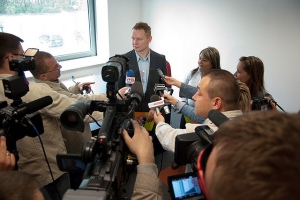 You meet your donor for coffee and chat about what’s happening in her life. Mostly it’s personal stuff, but you smile, nod and sip your coffee.
You meet your donor for coffee and chat about what’s happening in her life. Mostly it’s personal stuff, but you smile, nod and sip your coffee.
She asks about one of your nonprofit’s program and you’re prepared with solid stats and a couple of impact stories. Your donor smiles and shakes her head, yes.
So you make the ask.
Suddenly, the temperature drops 10 degrees, a noticeable change in your donor’s demeanor. She glances at her phone, exclaims over the time and rushes out the door without saying yes, but not saying no either.
You give her a quick hug, and sit back down to finish your coffee, wondering what went wrong. In your mind, you review the steps you’ve taken to cultivate this donor and prepare for the ask.
How you wrote a warm, personal note on the thank-you letter of her and her husband’s third gift this year.
How you took them on of a tour of your facility, showing them the impact of the program for which they both seem to have an affinity. You even invited the chair of your board to join you for this tour, and they discovered they both belonged to the same country club.
How this Power Couple also came to your gala dinner last month, bidding on some high ticket items while seated at a table of other high-end donors.
According to all the training and guides and handbooks on fundraising, you should have had a very willing donor ready to make a substantial gift at your coffee meeting. That’s the science behind fundraising – a series of steps and interactions that ultimately lead to major gifts.
But fundraising is more than a science. A good fundraiser understands the art of fundraising, and knows that sometimes the best ask is no ask.
In this scenario, here’s where a truly savvy fundraiser is going to succeed by recognizing that art.
While it’s true that women tend to be the charitable-giving driver in heterosexual couples, agreement is required from both members of a power couple. In this case, both people needed to be present for a major ask.
Your Power Couple has already made four gifts this year – three smaller donations and one fairly large one at a gala event. Why are you asking again just a month after a major fundraising event? Donors don’t like being treated like ATMs where you consistently make withdrawals.
Your donor started off the meeting talking more about personal topics. The fundraiser would have been smarter to simply follow her donor’s lead and talk about the program the donor asked about, but simply thank the donor for their major gift at the event and talk about how much of an impact it made.
That warm, effusive and genuine gratitude would likely have been carried back to the donor’s spouse in their conversation over dinner or as they were turning in the for the night.
Instead of making an ask, you’ve planted a seed that will grow as the couple continues to be engaged. Perhaps they would have taken your nonprofit’s mission back to their respective businesses as potential recipients of corporate donors.
Perhaps in a few months, you could have invited both of them to dinner with your executive director and made a substantial ask then. With both of them present, after a period of months have passed since their last substantial gift.
That, my friends, is a fundraiser who understands the art of fundraising, one who will be highly successful in using both the art and the science of fundraising.







